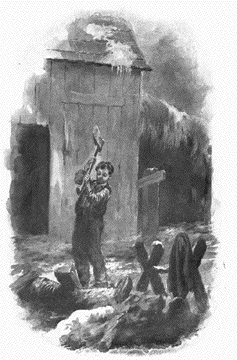Being raised on a farm in
Chautauqua County near Panama, I learned to enjoy nature
and country life. Special to me were the seasons of the
year, wild flowers and the woods. Oak, pine and maple are
the woods most often found for sale in this area. Many of
the Amish have their own sawmills.
You can use pine to start a fire since
it can give quick heat, but then switch to oak for a
slower, long lasting fire. I always did enjoy hickory. It
was fun to hear the crackle and pop in the fireplace.
Hardwood such as oak and hickory make a lot of heat with
little smoke. Softwoods such as pine and cedar are better
choices for kindling than for generating heat, since they
produce less heat and are more apt to leave creosote in
the chimney. Use seasoned or dry wood that was cut at
least six months ago. It burns hotter and is easier to
start. Check the ends of the logs for cracks that have
signs of dryness. Dry logs will make a sharp crackling
sound. Dad always said a true cord of stacked wood
measures four feet high, four feet wide and eight feet
long. I wonder if that holds true today?
At the present most woodstoves and
fireplaces take shorter wood. Most wood is in two foot
lengths. My father always kept wood cut ahead and then
stacked in neat rows in a strong built woodshed, near the
back of the house. It was stacked so the air could
circulate through the logs. There are many in our area
that sell wood. Sometimes with delivery included,
classified ads show full cords available at different
prices. One can buy preformed wax and sawdust logs from a
supermarket. It is hard to understand the point of such a
product, unless it is for city folks who have no access
to wood. On a cold winter night, how nice it is to have a
warm wood fire, a dish of popcorn, and a good
book.
